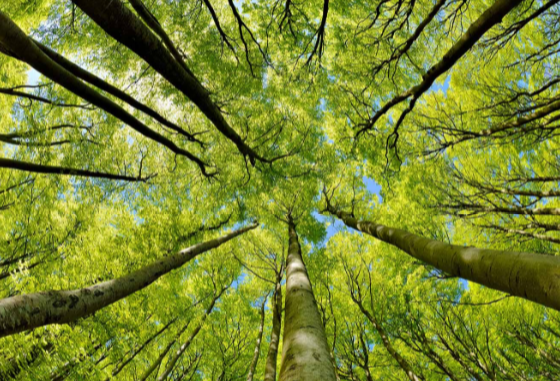
The European Union's Biodiversity Strategy for 2030 aims to halt
biodiversity loss and restore ecosystems, but what does this
mean for Europe's wood supply? In a new study, researchers
examine how different modes of implementing the strategy's
conservation targets could influence forestry and the wood-based
bioeconomy in the EU.
Forests are crucial for climate change mitigation. Not only do
they enable sequestration and storage of carbon, but they also
produce biobased materials and bioenergy to replace fossil
fuel-based products and energy sources. However, recent research
highlights a knowledge gap with regard to juxtaposition of
biodiversity conservation and the use of forests for the
wood-based bioeconomy, which involves the use of wood as a raw
material across various sectors.
In the study, published in Global Environmental Change and led
by IIASA researcher Fulvio Di Fulvio, scientists examine how
different approaches to the implementation of EU Biodiversity
Strategy conservation targets could influence the EU wood-based
bioeconomy.
Key findings:
-
Future harvestable biomass
is projected to increase in all protection scenarios;
-
The most balanced scenario - allocating the same percentage
of protected area in each member state - allows for growth
in wood harvest up to 24% and wood products net export
increase;
-
Under the strictest protection scenarios, EU wood harvest
could still increase by 20%, but wood products net export
could decline;
-
Reduced logging in the EU could lead to increased harvests
in other global regions, particularly in boreal forests.
"It is crucial that forest management policies can balance the
role of forests, both for biodiversity and for the bioeconomy,"
says Di Fulvio. "Seeking to lay the groundwork for such
policies, in our study we used the state-of-the-art GLOBIOM
model to simulate forest management and the resulting impacts on
wood harvest and trade under seven different forest protection
scenarios until the year 2100. Our research suggests that
well-planned policy implementation has the potential to balance
biodiversity conservation and sustainable resource use."
The study emphasizes that as the EU moves forward with its Green
Deal and decarbonization efforts, policymakers need to exploit
synergies to ensure that environmental policies contribute to a
resilient and sustainable future for both nature and society.
This study is the result of a cooperation between scientists
from IIASA and several reputable research organizations,
including the Swedish University of Agricultural Sciences; the
University of Jyväskylä; the Finnish Environment Institute; the
Natural Resource Institute, Finland; the Norwegian Institute for
Bioeconomy Research; the Norwegian University of Life Sciences;
and the Swiss Federal Institute for Forest, Snow and Landscape
Research.
Source:
miragenews.com

